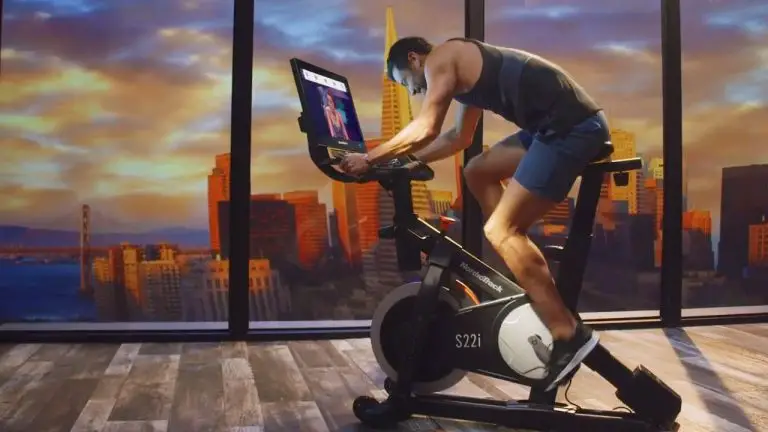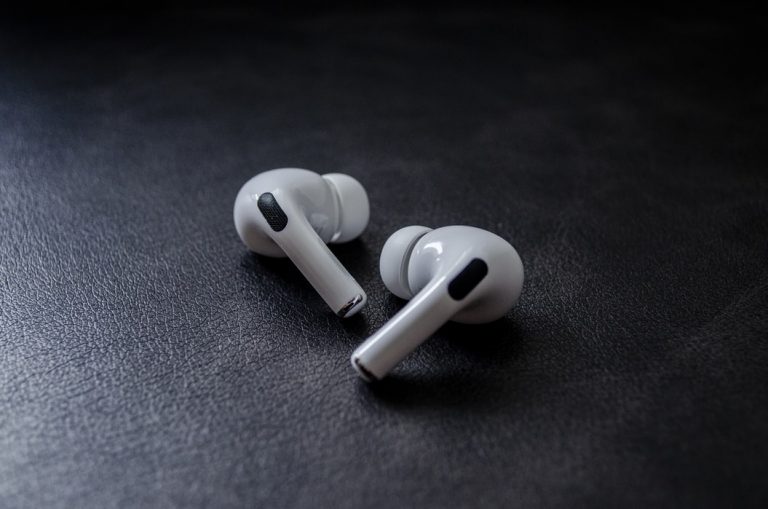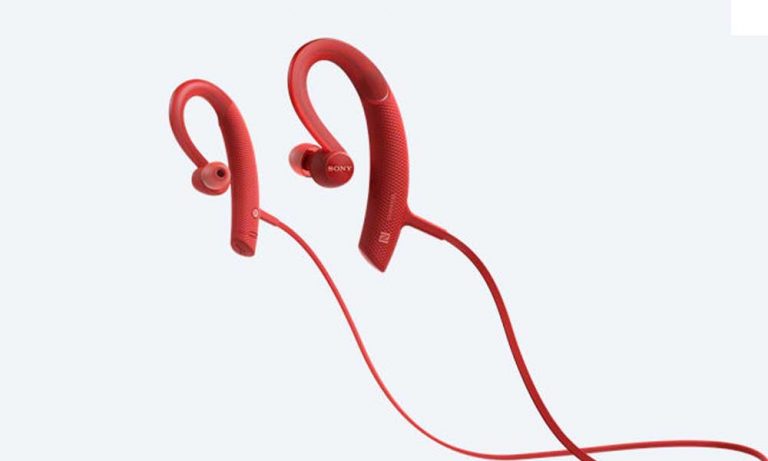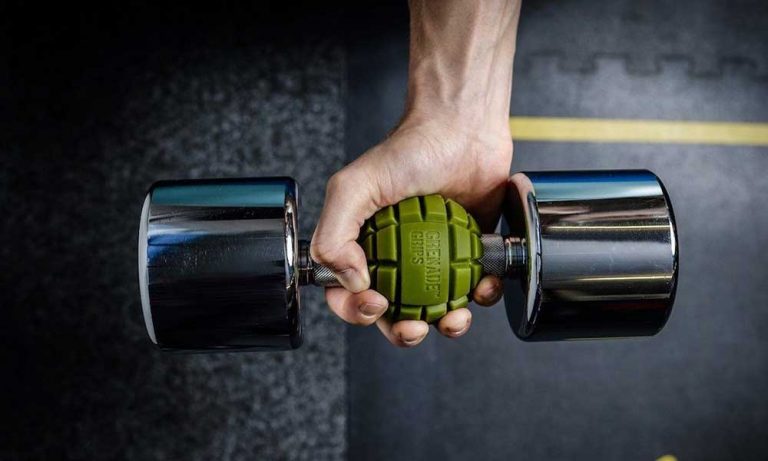Are HOKA Shoes Worth It? – Hoka Buying Guide (Updated 2023)

ListedFit is reader-supported. When you buy through links on our site, we may earn a small commission.
Are Hoka Shoes Worth It? It’s no great secret that running shoes aren’t always the most aesthetically pleasing footwear, but most athletes are usually willing to sacrifice looks for performance.
Hoka running shoes, however, have had more than their fair share of disses when it comes to their visual appeal. In fact, in a 2013 headline, Outdoor Magazine called them clown shoes. (Really, it’s true.) Oof.
Let’s get it out of the way right now: Hoka running shoes are big. Chunky, even.
They’re like the fat tire bikes of the running shoe world: the soles are enormous, the colours are loud, and they make their presence known, even if you weren’t particularly looking for them.
They’re not minimalist shoes; if anything, they’re maximalist.
And it’s no mystery who makes them, the letters H-O-K-A are literally written large on the side of every single shoe.
They may be one of the latest “it” shoes in terms of overall comfort, but there is nothing subtle about them.
Table of Contents
What Are The Best Hokas For…
Use our list below to help you find what Hoka shoes are best for you depending on what sort of activities you do:
What Are the Best Hokas for Everyday Training
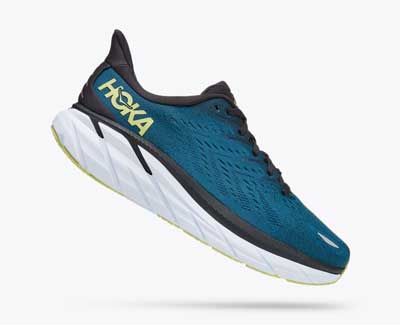
“The foam-based sole won’t wear down easily, even if you put them through their paces running or walking long distances every day. “
The Hoka Clifton 8 is our recommended shoe for everyday training.
The Clifton 8 has a thick, foam-based sole that provides top-notch cushioning and support for your feet. Plus, they have a stable platform that’ll keep you steady and supported. If you have pronation or flat feet, these may be worth considering.
The wide toe box and other cushioning features help reduce pressure on your toes and allow for a more natural range of motion. You can wear them for running, walking, or just strolling about. The foam-based sole won’t wear down easily, even if you put them through their paces running or walking long distances every day.
All in all, the Hoka Clifton 8 is a top-notch shoe for everyday training.
What Are the Best Hokas for Cushioning?

The Bondi are designed with maximum cushioning in mind, and you can see that instantly from the sole.
If you’re in the market for a comfortable, cushioned running shoe, you should check out the Hoka Bondi. The Bondi are designed with maximum cushioning in mind, and you can see that instantly from the sole.
The Bondi have an oversized midsole. This provides extra cushioning and support you will feel from the first moment you try them on making them comfortable and soft for all-day wear. The shoes also have the option of a wide fit too, something not all shoes of this type offer.
But perhaps the most striking feature of the Hoka Bondi is their responsive ride. These shoes feel quite springy, the foam midsole has firmness and flexibility to it and isn’t completely soft. And with a durable outsole that can handle a variety of terrain, the Bondi is a good pick option for all types of running.
If you’re looking for a well-cushioned shoe have a look at the Hoka Bondi.
Best Hokas for Distance Running
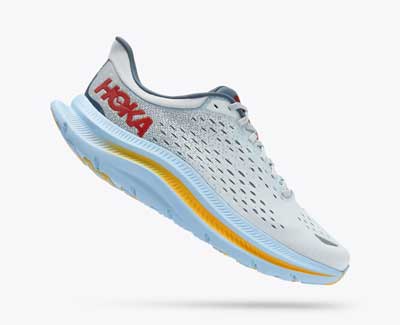
You could say these are a more toned down version of the Cliftons, but that’s what makes them better for longer distance running.
We recommend the Hoka Kawana for longer-distance running as it has more moderate stability, You could say it’s a more toned-down version of the Cliftons, but we feel this makes them perfect for longer distances.
Best Hokas for Speed
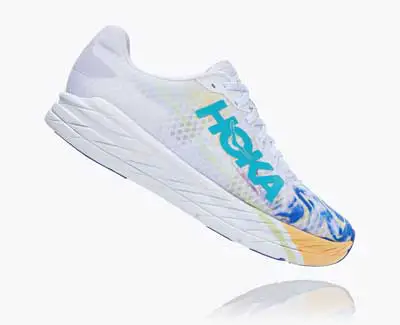
Great fit and feel. You will be surprised at how lightweight these feel.
It will surprise you how lightweight the Rocket Xs feel. Very light and comfortable enabling you to run for longer periods without feeling as much strain.
Best Hokas for Trail Running
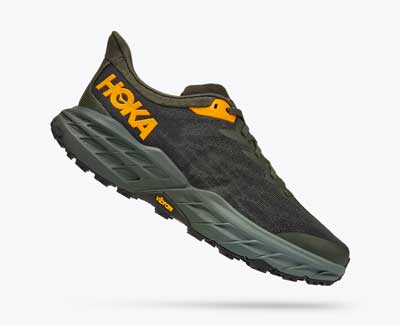
A vast improvement on the Speedgoat 5.
Many were disappointed that the Speedgoat 4 was discontinued by Hoka and a frenzy of people trying to get their hands on the Speedgoat 4 ensued, however, the Speedgoat 5 proved that they were actually better than the 4.
The Speedgoat 5 feel much lighter than the 4 and provides excellent comfort. If trail running is your preferred activity, these are worth looking into.
Much like the Arahis and a few other Hokas however, you may have to go size up as these can feel a bit small.
Best Hokas for Overpronators
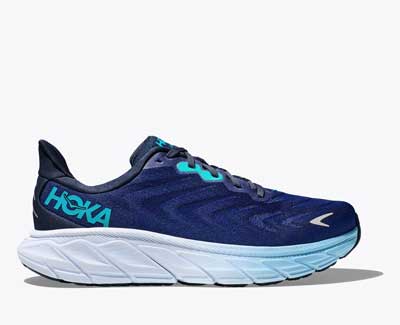
If you have pronation, consider the Arahi, but do be aware, they are known to run a little small so you may have to order a half or a full size up.
For people with pronation or flat feet, the Arahi’s by Hoka are a great option. However, these shoes have been known to run a little bit on the small side, if you can, order one size up.
What Are The Pros and Cons of Hoka Shoes?
Below I’ve put together some of the pros and cons of Hoka shoes overall.
I”d say that Hoka shoes offer a number of benefits, including excellent cushioning, stability, comfort, breathability, and versatility. However, they may not be the right choice for everyone, due to factors such as price, weight, durability, appearance, and fit. It’s important to consider your individual needs and preferences when deciding whether Hoka shoes are a good choice for you.
- Cushioning:
Hoka shoes are known for their exceptional cushioning, which is achieved through the use of thick, foam-based soles.
This can be particularly beneficial for runners who need extra support and cushioning to reduce the impact on their joints and muscles. - Stability:
The thick, foam-based soles of Hoka shoes also provide a stable platform for running and other activities. This can be especially helpful for people who have flat feet or overpronate (roll inward too much) when running. - Comfort:
Many people find Hoka shoes to be extremely comfortable, due in part to their ample cushioning and stable platform. The shoes also tend to have a wide toe box, which can help reduce pressure on the toes and allow for a more natural range of motion. - Breathability:
Hoka shoes are designed with breathable materials and ventilation holes to help keep feet cool and dry during exercise. - Versatility:
Hoka shoes are suitable for a variety of activities, including running, walking, hiking, and even casual wear.
- Price: Hoka shoes can be relatively expensive compared to other brands, which may be a deterrent for some consumers.
- Weight:
Because of their thick, foam-based soles, Hoka shoes can be quite heavy compared to other types of running shoes. This may not be an issue for some people, but it could be a concern for those who prefer a lighter shoe. - Appearance:
Some people may not like the bulkier, more clunky appearance of Hoka shoes, as they are designed with thicker soles and a more cushioned feel. - Fit:
Hoka shoes may not fit all foot types equally well. Some people may find that the shoes are too wide or too narrow, or that the toe box is too roomy or too cramped. It’s important to try on Hoka shoes and walk around in them before purchasing to ensure a good fit.
Who are Hoka?
Hoka, or to use the company’s full name, Hoka One One, was founded in France in 2009 by two former Salomon employees.
Since 2013, the company has been owned by California-based Deckers Brands, which is also the parent company of Uggs, Sanuk, and Teva.
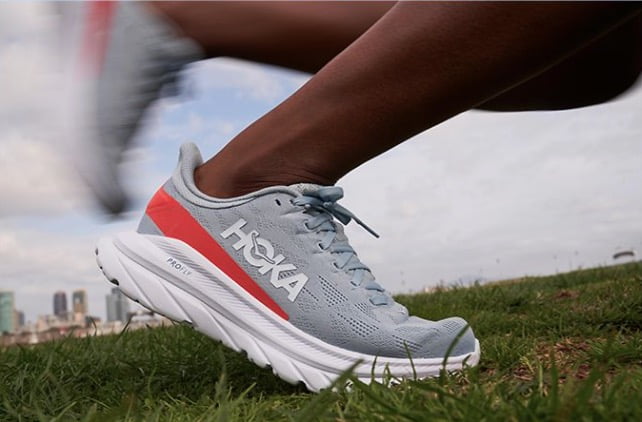
You may be tempted to say it One-One, like the number, but Hoka One One is pronounced “hoka onay onay.” It’s a Mâori phrase that means “now it’s time to fly” — indeed, quite a promise from a humble shoe.
The first models of Hokas were initially popular among ultramarathoners and trail runners, which makes sense: those fat soles offer great cushioning on long runs and great protection from jagged and uneven terrain.
Now, of course, Hokas are adored by serious runners, casual runners, and even non-athletes who just want to wear comfortable shoes and not deal with lower body aches at the end of each day.
Are Hoka Shoes Good For Running?
It’s probably human nature to want to rank things, and running shoes are no exception.
If you’re going to run, you want the best. Are Hokas a contender for best running shoe? Well, maybe.
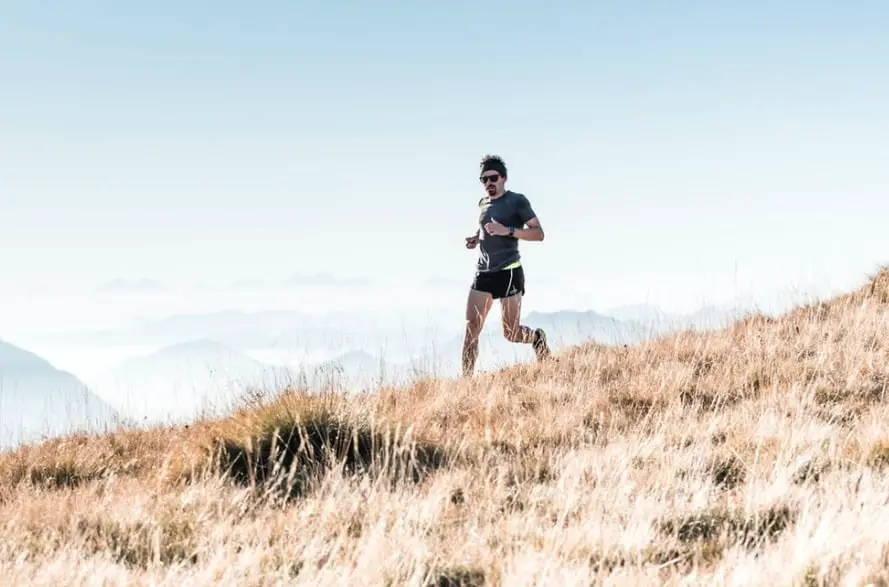
You’ll find lots of hyperbolic reviews and videos that claim Hokas are the best running shoes ever, and for some people, that’s true.
It’s important to remember, though, that there really is no best running shoe – there’s just a best running shoe for you.
If you’re the type of runner who wants the maximum amount of cushioning and support in your footwear, then Hokas might be exactly what you’re looking for.
They are surprisingly lightweight for such a physically large sneaker; they won’t weigh you down, so that’s a big plus since a common complaint about larger running shoes is that they’re on the heavy side.
The foam used for the sole isn’t especially dense, and the upper is a durable knit, keeping the overall weight to a minimum.
Hokas also boast a rocker sole, which can help provide good energy return on a run and can also prevent you from slapping your foot down as you go.
The soles on most Hokes are also noticeably thinner at the toe, which can help with push-off.
They’re not as extreme as some other types of rocker sole shoes, and Hokas definitely look more like athletic shoes and less like orthopaedic footwear.
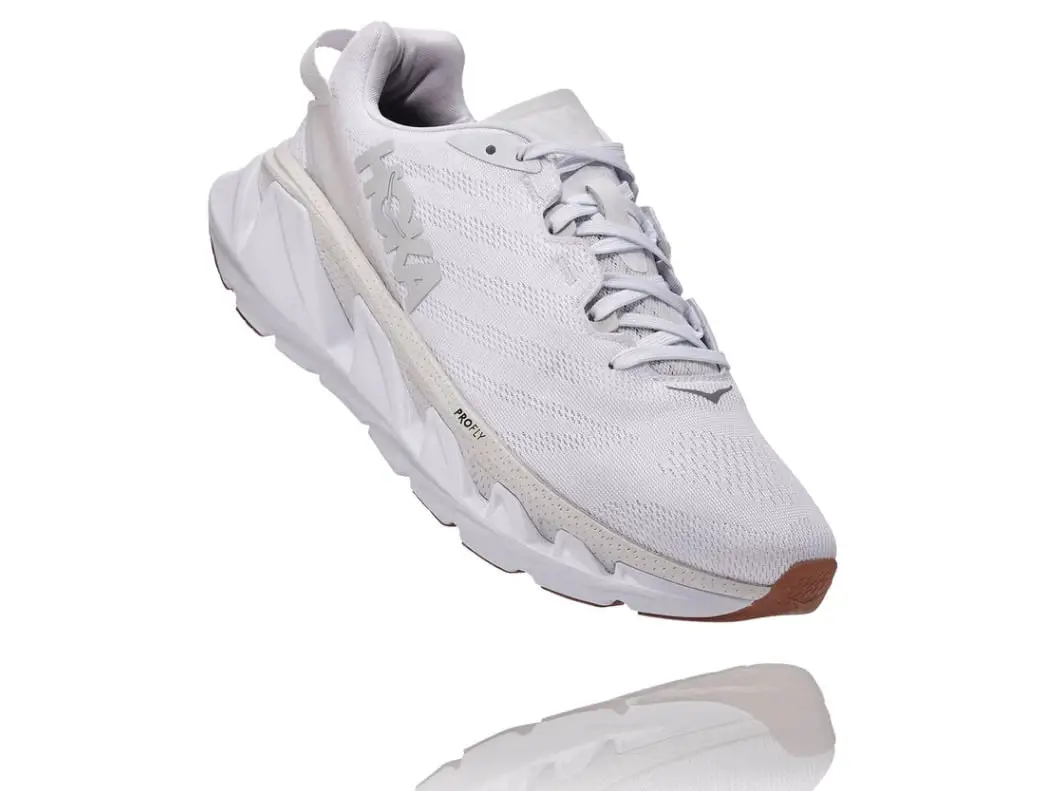
The big appeal of Hokas is the cushioning they provide, especially in the midsole. Most models use dual-density foam, which means the heel is softer for a more cloud-like sensation but firmer in the front to help you move forward more easily.
They’re easy on the feet, but they’re also easy on your knees and hips, as the immense amount of cushioning dampens the impact of your foot on the ground, minimizing the overall impact on your other lower body joints.
Ultimately, Hokas are ridiculously comfortable, and that’s why they’ve become so popular over the past decade.
However, you definitely have to want this type of bulky shoe. If you’re used to something a little more minimalist on your feet when you’re getting your miles in, Hokas will feel like a lot.
However, if you feel like you need the cushioning and don’t mind the size, then Hokas might be the best running shoe for you.
What Are the Different Types of Hoka Shoes?
Hoka makes several dozen different models, so it can be confusing to know which one is right for you.
A full run-down can be found on their website, but here are some of the more popular options.
First is the Bondi, which is the shoe people usually mean when they call Hokas “clown shoes.” It’s giant, with an insane amount of cushioning on its marshmallow of an impact-absorbing sole.
It may look a little funny (or a lot funny), but it’s a fan favourite for good reason.
The Bondi is an especially ideal shoe if you’re getting back into running after an injury, since it’s so protective, and runners and non-runners alike appreciate how the Bondi is easy on their joints without being heavy on their feet.
In fact, it’s popular among nurses and other people who work on their feet all day.
The Clifton and Clifton Edge are perfect for running and not quite as clunky as the Bondi. Both offer ample cushioning and are lightweight, though the Edge has a somewhat wider sole.
This may slow you down slightly, so if you’re trying to PR, it may not be the shoe to wear, but that wide sole offers great stability on all kinds of surfaces.
An even lighter and more streamlined version of the Clifton is the Rincon.
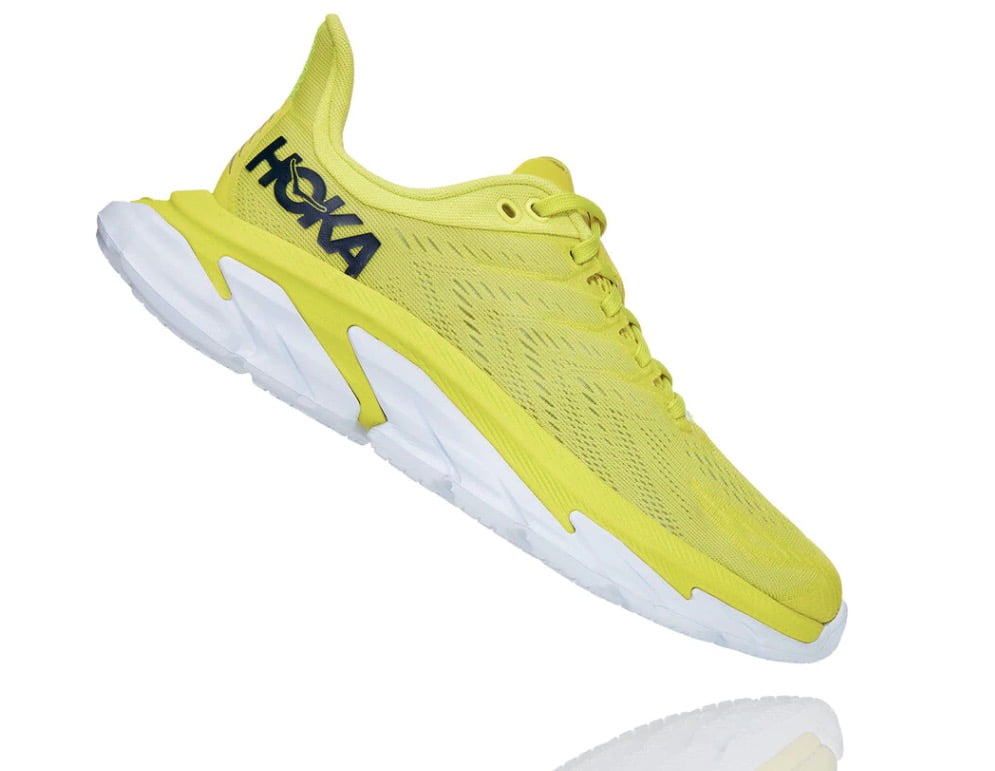
Hoka’s Mach is a good everyday shoe because it’s a bit stiffer. You can run in them, but they’re not as padded and cushy as the Bondi and Clifton models.
Their Speedgoat is a trail model that offers a wider sole for more stability and a highly reinforced durable upper.
Then there are the more high-end racing shoes. The Carbon X offers a slimmer upper but a longer sole to keep you a little more stable. The Rocket X takes it one step further with responsiveness and cushioning, while the Elevon is a bit stiffer than the other models for full support.
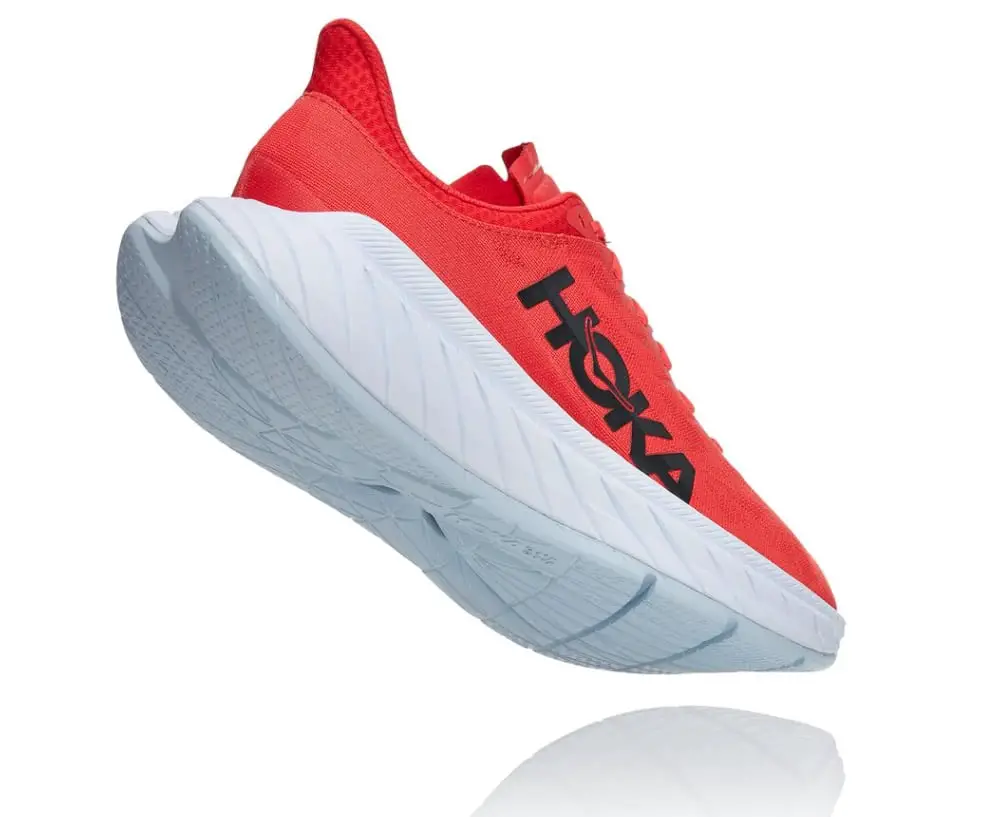
And then there’s the TenNine, presumably named for the start of a countdown at the end of which you’ll blast off.
This model has a cartoonishly long sole that juts out on the back end; if the Bondi looks like clown shoes, the TenNine looks like backwards clown shoes.
Hoka website even has a warning that these are designed specifically for running and that your balance and dexterity may be off if you wear them for anything else. It even instructs customers to not “wear these on the stairs or while driving.” Yikes!
Are Hoka Shoes Good For Flat Feet?
In short, yes — the generous cushioning in Hokas supports flat feet and can help prevent associated lower body aches.
A Runner’s World shoe roundup from early 2021 noted that Hokas had an ideal balance of cushioning and firmness to keep low or collapsed arches feeling supported.
This is particularly the case with the Gaviota and Arahi models, the latter of which is firmer in the midsole to add extra support.
Do Hoka Shoes Have Good Arch Support?
Cushioning and support can prevent high arches from feeling sore after a workout, and Hoka shoes have those two things in spades.
It can be a real challenge for distance runners with high arches to find shoes that are comfortable deep into a long run, but Hokas have been winning over more and more athletes.
Look at the footwear of choice in a marathon these days, and you’ll see a lot of runners going with Hokas, especially the Cliftons, which strike the right balance of firm support and soft cushioning for the long haul.
Are Hoka Shoes Good For Plantar Fasciitis?
The features that make Hokas good for high arches are the same ones that make Hokas a good choice for anyone suffering from plantar fasciitis pain.
If you’re a runner who suffers from plantar fasciitis, or if you’re on your feet all day, you want a shoe with good cushioning and adequate arch support to minimize soreness.
Since Hoka One One shoes offer some of the best cushioning in the field, you’d do well to give them a shot.
One of the more widely recommended models to manage planter fasciitis is the Bondi, the so-called clown shoe, because of its noticeable impact protection.

The thick sole is also firmer, which can help support your feet and reduce plantar fasciitis symptoms. Do they look a little odd? Sure. Do they look odder than other maximum-support sneakers? No way.
Are Hoka Shoes Good For Wide Feet?
Lots of running shoes are on the narrow side, which reduces the options for runners with wider feet.
Hokas, however, don’t run narrow, and almost all models have a nice wide-toe box.
Most models come in wide widths, and a few are even available in extra wide, meaning there’s a proper fit for just about everyone.
Conclusion – Are Hoka Shoes Worth It?
Hokas are comparable in price to other high-end running shoes, with prices ranging from around $100 for shoes in last season’s colours to over $250 for the latest models of the TenNines.
They’re definitely an investment in your health and in your comfort, so to us, they are worth it.
Running shoes from Hoka do last a while, typically at least 300 miles and sometimes up to 500 miles.
Hokas may need to be replaced on the lower end of that range, though, as the cushioning can wear out and leave you vulnerable to injury.
Start paying attention to your Hokas and your feet before you hit that 300-mile mark.
If you’re striking the ground hard, you may need to replace them then, but if you have a lighter strike, you could potentially get another 100 or so miles out of them.
Author
-
Stuart Patrick is a health and fitness lifestyle journalist who writes for ListedFit.com.
“I've spent a lot of time trying to get in shape and change my body and I realised there are so many untruths in the health and fitness industry that can slow down or stop your progress, so I share my knowledge and experience to help others to cut through the BS.”
Latest entries
 NutritionJune 5, 2024Shilajit Products
NutritionJune 5, 2024Shilajit Products FitnessMay 14, 2024Donate Blood
FitnessMay 14, 2024Donate Blood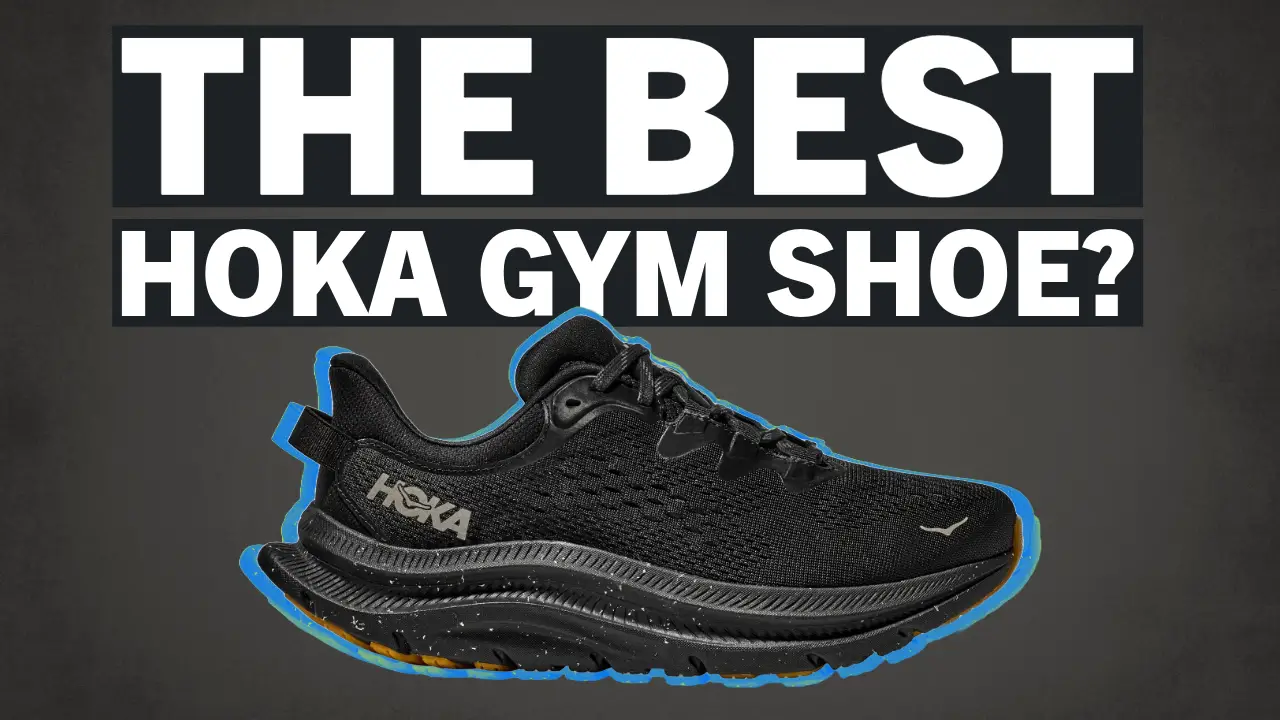 GearApril 6, 2024HOKA Kawana 2 Review – Are These The Best HOKA Gym Shoes?
GearApril 6, 2024HOKA Kawana 2 Review – Are These The Best HOKA Gym Shoes?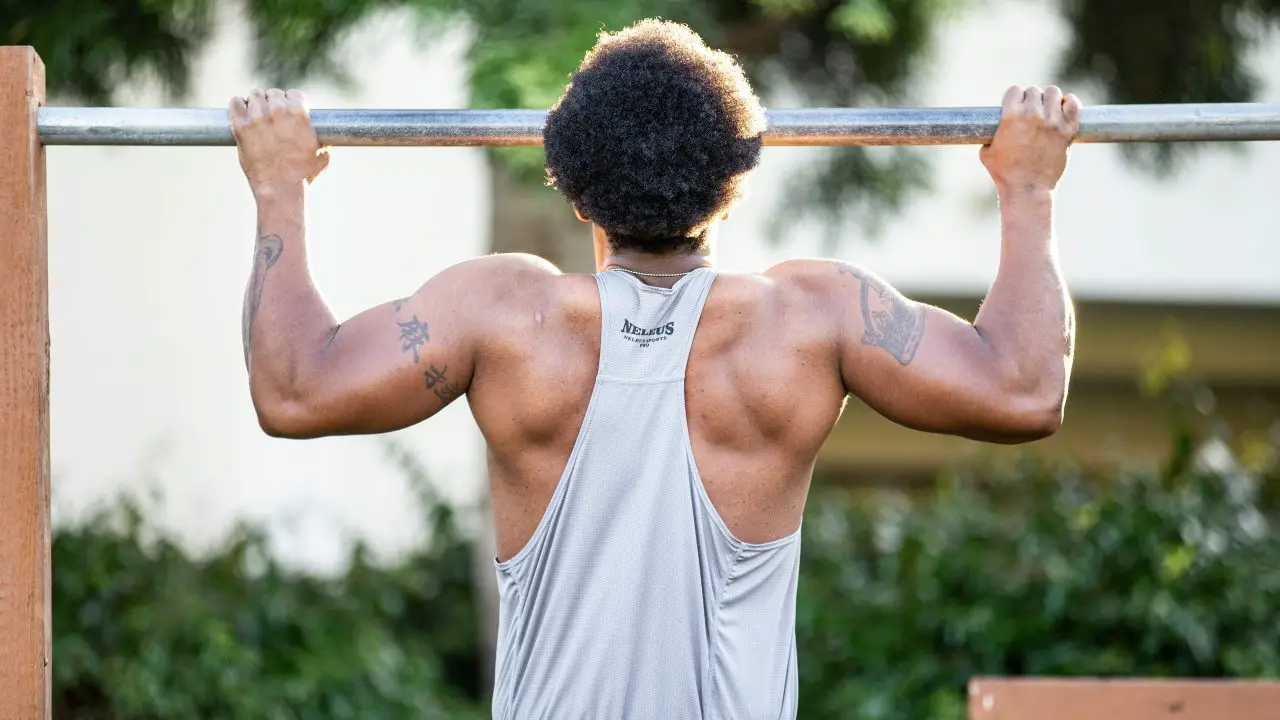 CrossFitApril 4, 2024How Many Pull-Ups Should I Do Daily? Let’s Figure it Out…
CrossFitApril 4, 2024How Many Pull-Ups Should I Do Daily? Let’s Figure it Out…
Affiliates:
This post may contain affiliate links that at no additional cost to you, the site may earn a small commission. We only recommend products we would use ourselves and all opinions expressed on this site are our own.
General Advice:
The information provided in this article is for general informational purposes only. It is not intended as a substitute for professional advice. Always consult with a qualified healthcare professional before starting any new diet, exercise program, or making changes to your health routine.
Accuracy Advice:
While we strive to provide up-to-date and accurate information, the content in this article may not reflect the most current research or medical guidelines. We encourage readers to do further research and consult with professionals for more personalized advice.
Our Recommendations:
The products and services mentioned in any of our articles are recommended based on our independent research and personal experience. We are not sponsored by any company. We aim to suggest products and services we believe are of high quality and could be beneficial to our readers.

